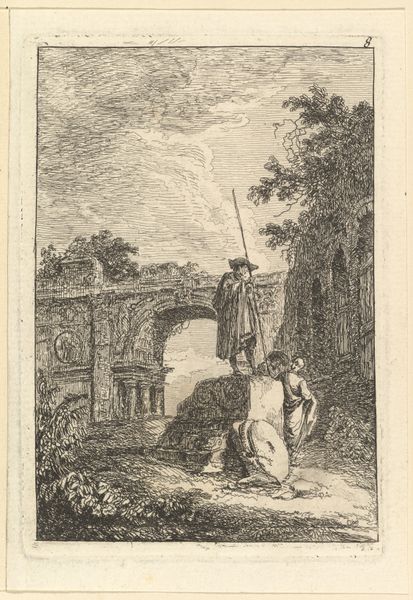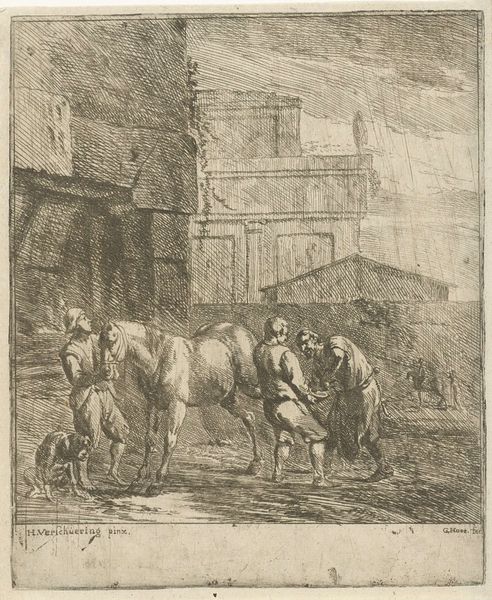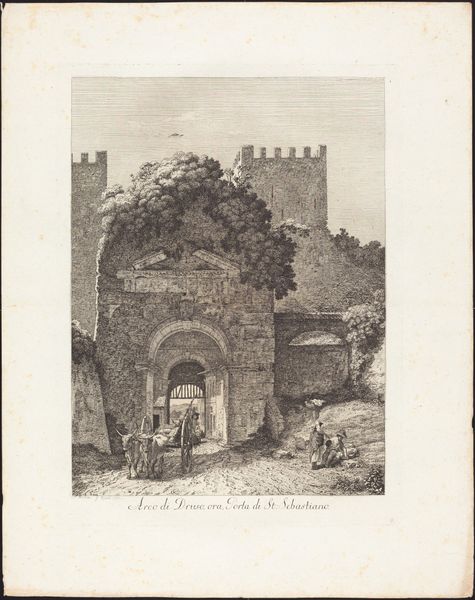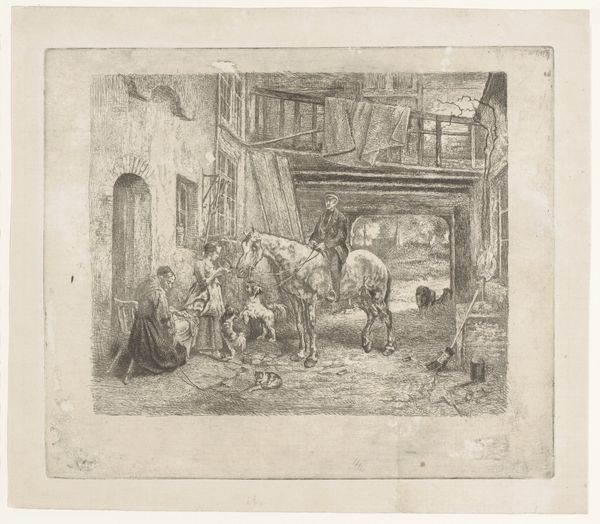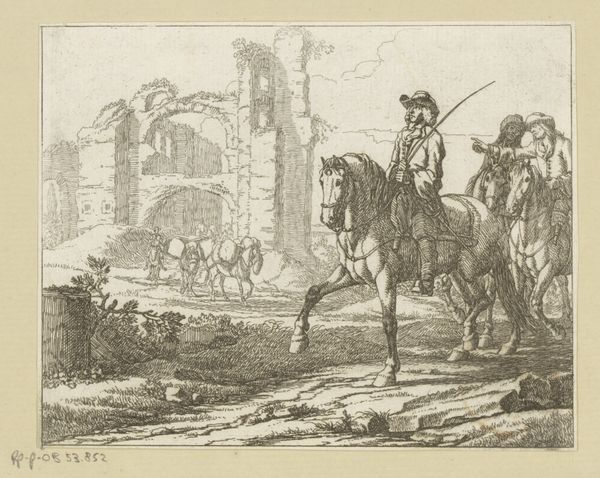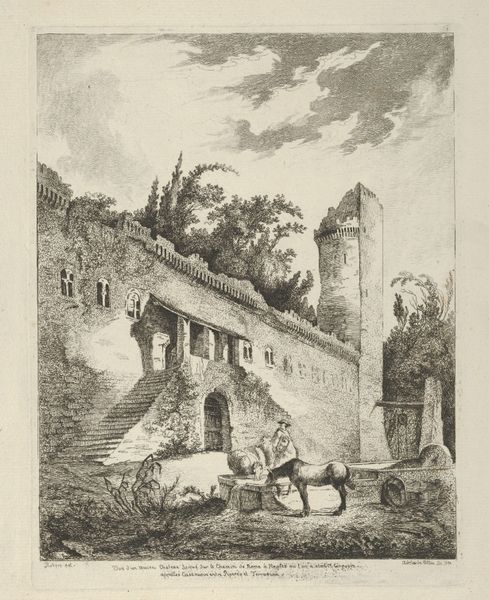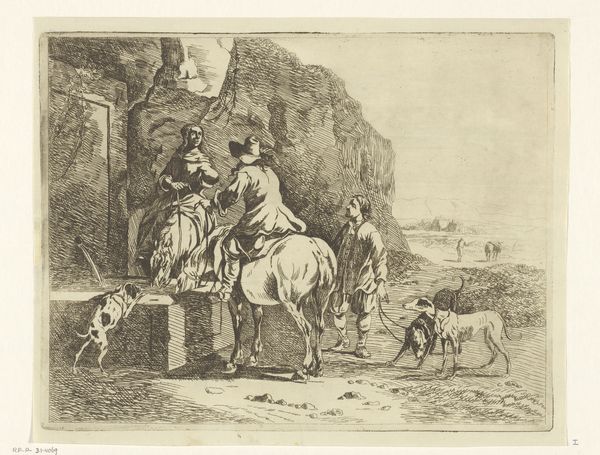
drawing, paper, ink
#
drawing
#
pencil sketch
#
landscape
#
figuration
#
paper
#
ink
#
line
#
genre-painting
#
academic-art
#
realism
Dimensions: height 196 mm, width 138 mm
Copyright: Rijks Museum: Open Domain
Curator: This drawing, rendered in ink and pencil on paper, is titled "Boer op een hooiwagen," or "Farmer on a Hay Cart," created in 1901 by Frans Lebret. It presents a pastoral scene, quite serene at first glance. Editor: The intricacy of the line work certainly creates a powerful sense of texture and light, but it also feels quite restrained, almost academic in its precision. It lacks a certain raw quality I often find more compelling. Curator: Yes, the careful arrangement and almost illustrative quality are key here. Note how Lebret uses varied line weights to define form, creating a shallow depth of field where the solid archway serves as a stage. Are we meant to see something beyond documentation here, in this snapshot of labor? Editor: Absolutely. This isn’t merely documentation; it speaks to the physicality of rural labor, doesn't it? Look at the heft of that ox, the load of the hay, the roughness implied in the weathered stone. I'm struck by how this labor is framed by structures and architectures seemingly unchanged by modernity. Curator: That archway, rendered so carefully, offers a visual and thematic portal. Its very solidity emphasizes duration, the continuum of rural existence in the face of societal transformation. Semiotically, the arch signifies transition. Editor: And what about the children? Two figures observing the passage, the procession of work, life lived in plain sight, which speaks to access and shared experience. Are they soon to take up the plow themselves? Is this the image the artist wanted to leave the viewer thinking about? I'm not sure... Curator: I am also thinking about the materiality of Lebret’s drawing materials—the paper, ink, and pencils. The choice to depict such labor in these precise media emphasizes an artistry that transcends the subject matter. The artist himself is an instrument laboring, like the ox. Editor: Good point. It prompts us to consider not just what is depicted, but also the choices—and limitations—embedded in the means of depiction, bringing artmaking back into the discourse surrounding representation. Curator: Indeed, the careful realism almost creates its own commentary. It causes us to ponder structure, representation, and artistic intent behind the image. Editor: It's a reminder that art doesn't simply mirror the world. Instead it refracts labor, vision, and time through very particular materials.
Comments
No comments
Be the first to comment and join the conversation on the ultimate creative platform.
